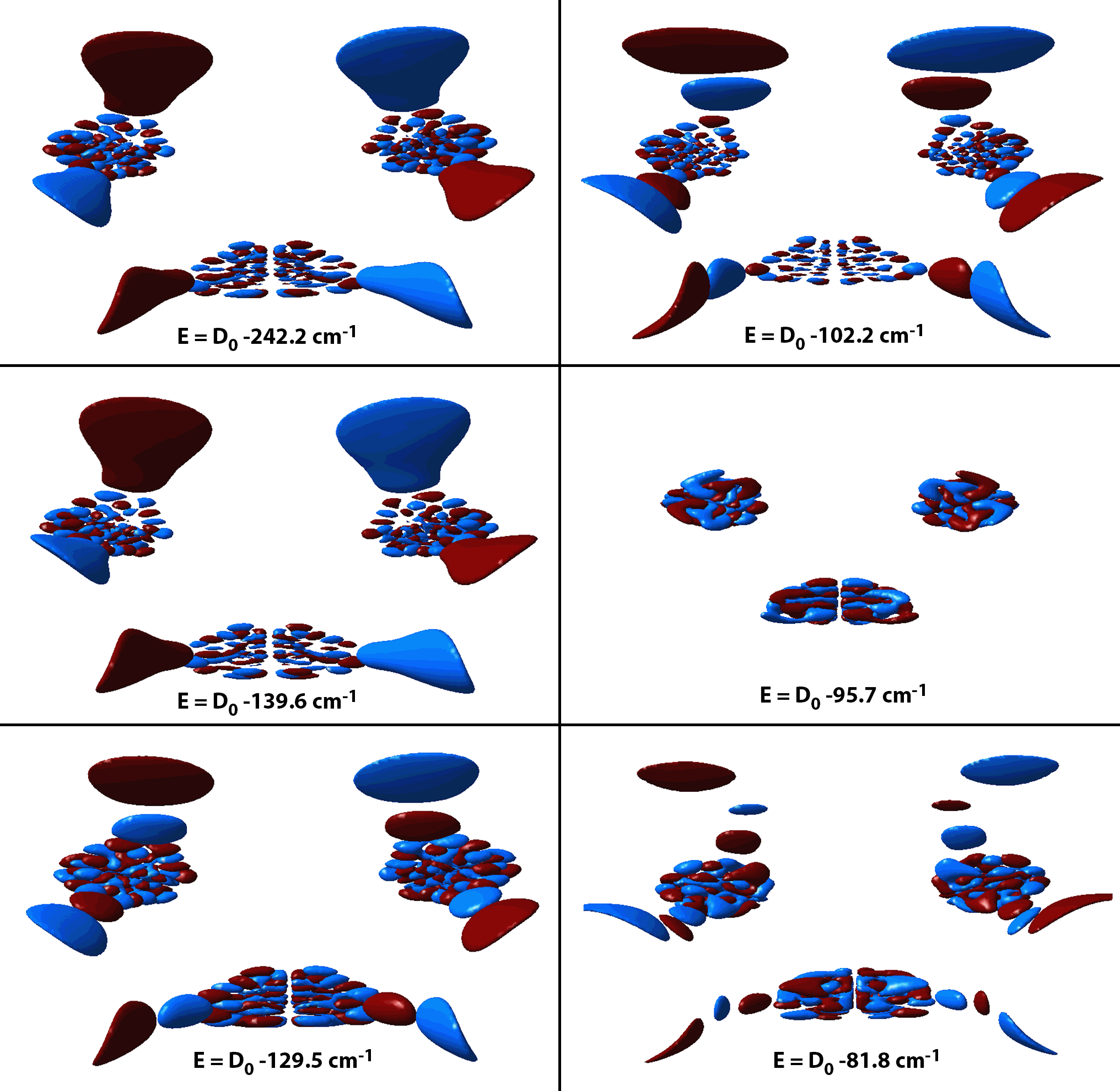Back to Publications
Steve Ndengue, Richard Dawes, Xiaogang Wang, Tucker Carrington Jr., Zhigang Sun and Hua Guo, Calculated vibrational states of ozone up to dissociation, J. Chem. Phys. 144, 074302 (2016).
ABSTRACT: A new accurate global potential energy surface for the ground electronic state of ozone [R. Dawes et al., J. Chem. Phys. 139, 201103 (2013)] was published fairly recently. The topography near dissociation differs significantly from previous surfaces, without spurious submerged reefs and corresponding van der Waals wells. This has enabled significantly improved descriptions of scattering processes, capturing the negative temperature dependence and large kinetic isotope effects in exchange reaction rates. The exchange reactivity was found to depend on the character of near-threshold resonances and their overlap with reactant and product wavefunctions, which in turn are sensitive to the potential. Here we present global “three-well” calculations of all bound vibrational states of three isotopic combinations of ozone (48O3, 16O218O, 16O217O) for J = 0 and J = 1 with a focus on the character and density of highly excited states and discuss their impact on the ozone isotopic anomaly. The calculations were done using a parallel symmetry-adapted Lanczos method with the RV3 code. Some comparisons were made with results obtained with the improved relaxation method implemented in the Heidelberg multi-configuration time-dependent Hartree code.
